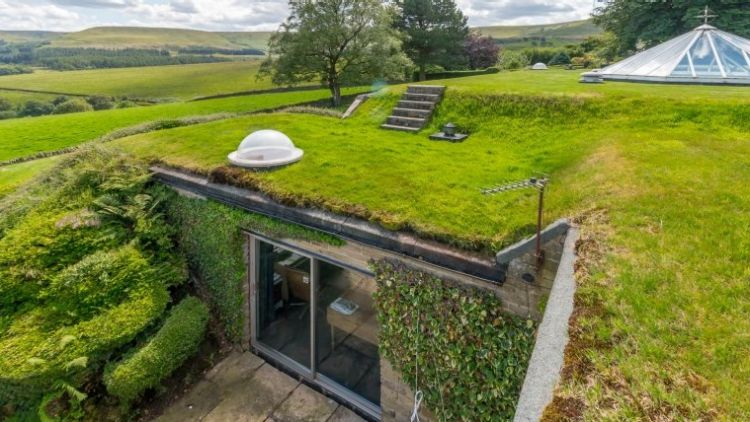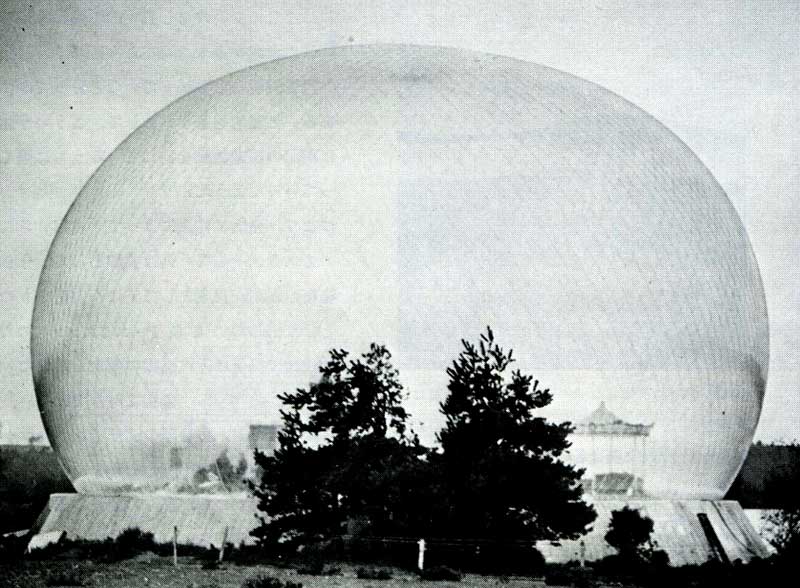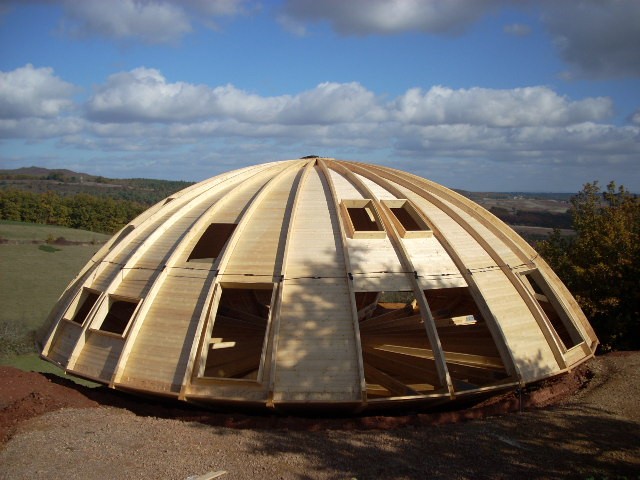Arthur Quarmby – Yorkshire, England
The British architect Arthur Quarmby
Arthur Quarmby is deeply linked to the French architectural scene of postwar. In 1965, he joined and then collaborated with the Habitat evolutif association with Pascal Häusermann, Antti Knight et chanéac. In 1974, it reports news of international research on the plastic in the book The Plastics Architect. During the years 1980-1990, he will regularly collaborate in several architectural journals ...

Underground Villa by Arthur Quarmby Underhill 1970, designed by Arthur Quarmby in Holme, in West Yorkshire.

Architect Arthur Quarmby in front of his underground house near Huddersfield, 1981.


An architect retired West Yorkshire sells unique home he designed it over there 41 years. Arthur Quarmby, Huddersfield, created his Underhill home over 18 months and was hailed as one of the most amazing houses of the country.








From the late 1950, Arthur Quarmby experimenting, in line with the architect Ionel Schein met 1959, new architectural solutions of plastics, both in modular, light and transportable. After an initial order for English railways (Relay Room System, 1959-61), it applies its principles to certain extreme situations requiring temporary housing, as scientific expeditions or emergency shelter (Emergency Mass Housing Units, 1962) but also to everyday life.
In 1968, Arthur Quarmby declines three architectural proposals for the Brighton marina, testifying to the structural research he was conducting at the time : Rigid Domes is a circular geodesic structure, a suspended structure consisting of a frame covered with stretched fabrics. A pneumatic structure that unfolds like inflatable cells around a core. The principles and forms of these structures seem to be inspired by natural forms, like fruit, flowers or shells.

FRAC CENTER – Project Brighton Marina, 1968.
FRAC Centre (Archives)
Arthur Quarmby
The Touchables
Made by Pakamac, the dome was designed by Arthur Quarmby, an architect very enthusiastic about the possibilities offered by the combination of plastic and pneumatics. Building with these materials and technologies had the potential to free designers from some of the constraints that previously determined the formal and aesthetic properties of a building., and made possible some of the most playful ovoid / spherical designs that have emerged over the years 1960. Showing that the phrase explode had more than one meaning at the time, Quarmby had developed in 1964 a prototype of an inflatable chair – a type of furniture that, like paper dresses and cardboard seats, spoke of modernity and disposable of a certain type of fashion of the years 60.
Several years later, Quarmby recalled that the dome desired by director Robert Freeman was an inherently problematic shape : “A three-quarter-sphere is quite a suspicious shape from a pneumatic point of view - the conditions of pressure and uplift vary around it and a difficult concentration of stress develops on top of it.’ In short, the dome looked beautiful, but was prone to wind damage. It was a problem that would haunt the production, especially since the filming of the film did not start until September. 1967 – just in time for windier fall weather. Indeed, concerns about weather conditions and the rising cost of using the dome have persuaded producers to change filming locations from a location in the Lake District to Surrey, calmer meteorologically.
Following various "misadventures", Film Designs has taken delivery of four different domes, each costing 2 400 £. Daily progress reports compiled by production manager John Oldknow provide insight into issues encountered :

On Monday 6 November : « [Third] Dôme arrived on site at 8:30 am »
Thusday 9 November 1967 : "Dome successfully inflated.
Saturday 11 November 1967 : ‘The dome was totally destroyed at 12:15 a.m.’
The production team finally took a fatalistic stance towards this capricious plastic god : "It is obviously impossible to predict what will happen with these domes, even if based on past experience, it seems unlikely that we will finish filming without further disasters ”.










